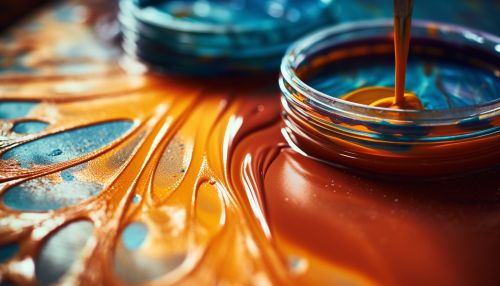Adhesion
Introduction
Adhesion is the tendency of dissimilar particles or surfaces to cling to one another. The forces that cause adhesion and cohesion can be divided into several types. The intermolecular forces responsible for the function of various kinds of stickers and sticky tape fall into the categories of chemical adhesion, dispersive adhesion, and diffusive adhesion. In addition to the cumulative magnitudes of these intermolecular forces, there are also certain emergent mechanical effects.
Types of Adhesion
Chemical Adhesion
Chemical adhesion occurs when the surface atoms of two separate surfaces form ionic, covalent, or hydrogen bonds. The engineering principle behind chemical adhesion in this sense is fairly straightforward: if surface molecules can bond, then the surfaces will stick together. An example of this principle can be seen in the bonding of an epoxy to a surface.


Dispersive Adhesion
Dispersive adhesion is the most common type of adhesion and is caused by van der Waals forces. These forces are created by the movement of electrons which cause temporary dipoles in molecules. This type of adhesion can be seen in common tapes and glues.
Diffusive Adhesion
In diffusive adhesion, materials are held together and some parts of the materials swap places at the joint by diffusion. This can occur when the molecules of both materials are mobile and soluble in each other; this would be particularly likely with polymer chains where one end of the molecule is attracted to the other material.
Factors Influencing Adhesion
Adhesion, the stickiness between surfaces, can be influenced by a number of factors, including the type of materials in contact, the roughness of the surfaces, and the presence of moisture, among others.
Material Type
The type of materials in contact can greatly influence the degree of adhesion. For example, certain types of polymers have a high degree of adhesion due to their chemical makeup.
Surface Roughness
The roughness of a surface can also influence the degree of adhesion. Rough surfaces have more surface area for adhesive to come into contact with and can create mechanical interlocking, increasing adhesion.
Moisture
The presence of moisture can also influence adhesion. Water can cause adhesion to decrease by forming a thin layer between surfaces, preventing them from coming into direct contact.
Applications of Adhesion
Adhesion is a critical component in many industrial and commercial processes. From the manufacturing of everyday products to specialized applications in the fields of medicine and engineering, the principles of adhesion are widely utilized.
Manufacturing
In manufacturing, adhesion is used in a variety of processes, such as bonding, sealing, and coating. For example, in the automotive industry, adhesion is used to bond parts together, such as in the assembly of engines or the bonding of body panels.
Medicine
In medicine, adhesion is used in a variety of applications, from the design of medical devices to the development of drug delivery systems. For example, adhesion is a critical factor in the design of medical implants, such as artificial joints or dental implants.
Engineering
In engineering, adhesion is used in a variety of applications, from the design of building materials to the development of new technologies. For example, adhesion is a critical factor in the design of composite materials, such as those used in the construction of aircraft or spacecraft.
